With a stronger, 3-axis motor, the new Zhiyun Smooth 5 Gimbal is built for professional filming, especially with larger or heavier phones, like the iPhone 13 Pro range.
Zhiyun's previous Smooth Q3 Gimbal was aimed at the YouTube audience, prioritizing lightness and a small size. The new Zhiyun Smooth 5 Gimbal can certainly be used for YouTube, but it's built for more serious use than just, say, selfies.
Most of this is evident in the sturdier construction. Its predecessor used a lighter plastic and was also engineered to slide up into an extended position.
This version does not extend, and its material feels more substantial. It's also definitely stronger — the Zhiyun Smooth 5 Gimbal is intended to take heavier phones.
Zhiyun says the phone clamp has improved with a deeper slot than the Smooth 4 gimbal. This means it can better support larger phones, including ones with cases.
The Smooth 5 is rated for holding phones weighing up to 300 grams, or about 10.6 ounces. For comparison, an iPhone 13 Pro Max weighs 238 grams, or 8.39 ounces.
Design - setting up and fitting a phone
In general, gimbals can be remarkably fiddly to set up. That's because they always need some kind of extension, something needing to be unfolded — and also because of their motor.
This gimbal is a three-axis one, and its arms can be locked into a closed position for storage. These arms have to be released from this locked position when powered up because otherwise, the gimbal motor tries to move them both.
It's common for users to find the motor fighting them if they have the habit of fitting the phone after powering it on.
Even when used properly, though, it can be fiddly even when the phone is fitted before turning the gimbal on. First, the arms have to be unlocked, then the phone must be fitted — and balanced.
The idea is that a phone should stay horizontal even without the gimbal motor turned on. When balanced perfectly, the gimbal keeps movements from unbalancing the phone.
With an unbalanced phone, the motor has to work all the time to correct the balance and keep the phone steady.
This is the same with every gimbal from every manufacturer, and previously with the Smooth Q3, it took time to find the proper balance position. With the new Smooth 5, though, it's easier.
Using an iPhone 13 Pro, the phone could be fitted into its holder and pressed all the way toward the backstop. Different phones will vary, but with this model, the right position was the easiest to find.
It also feels the most secure, as the phone is held on one side as well as being gripped top and bottom.
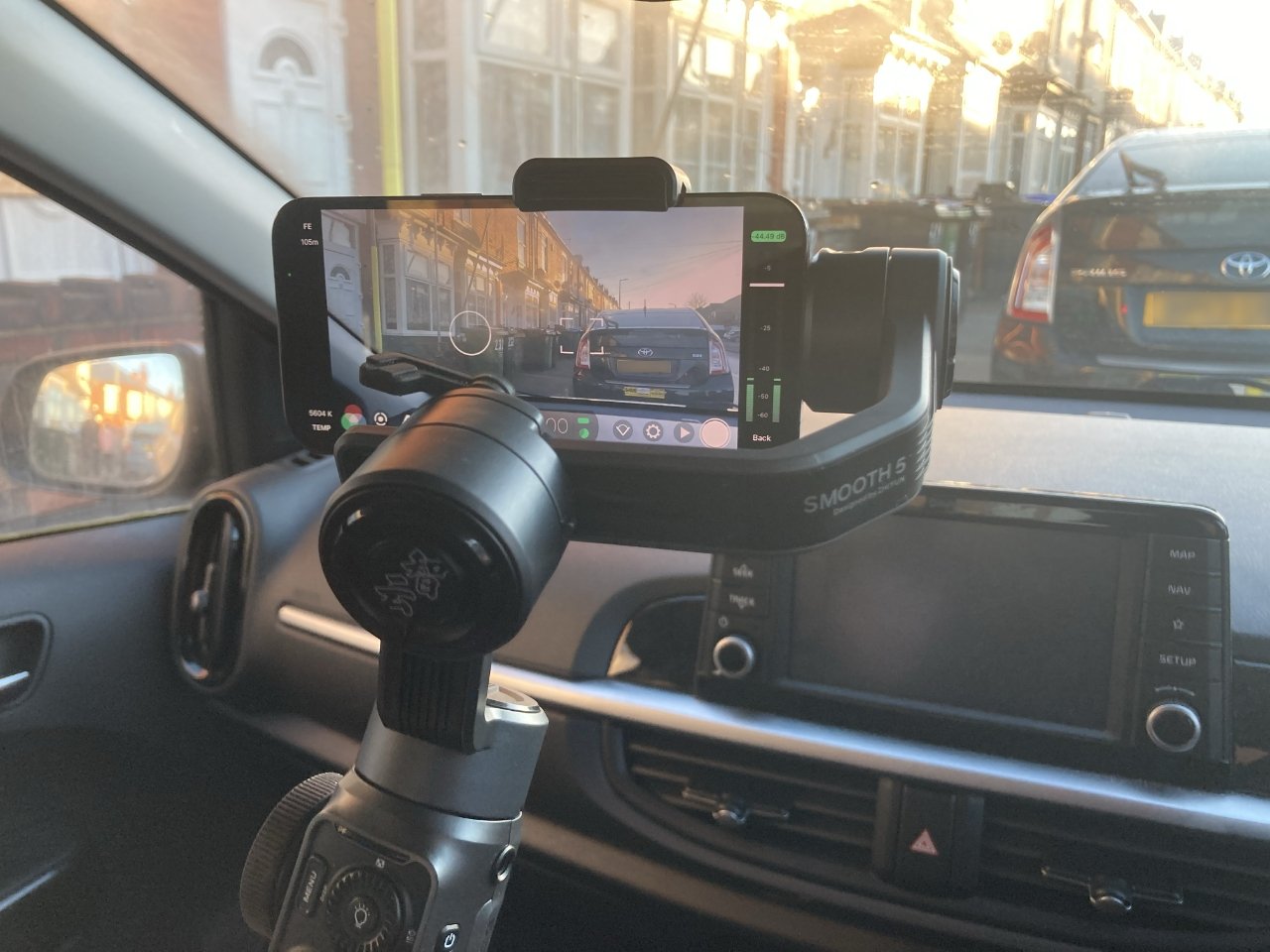 You expect that the gimbal arm assembly will sometimes be in frame, especially with selfies, but it isn't
You expect that the gimbal arm assembly will sometimes be in frame, especially with selfies, but it isn'tDesign - access to phone ports
However, there is an issue in that this position means you lose access to the Lightning port on the iPhone. That's a problem if you, for instance, record audio with a lapel mic connected to that Lightning port.
It is possible to mount the iPhone the other way around, so that the Lightning port end is at the opposite end, away from the gimbal support arm. However, that positions the lenses in such a way that the gimbal arm can be seen in the shot.
This is the big surprise with the Smooth 5. Even when the phone is fitted correctly, it looks as if those arms must be in the shot, but they are not.
It's never an issue when you are using the gimbal to shoot ahead of you, to use it for filming whatever is in front. Yet it's also not once an issue when you're using this Smooth 5 as a selfie camera.
Design - controls and ports
The least effective part of the Smooth 5 design is in its charging port. It's positioned more conveniently than on, say the Smooth Q3, but it's covered by a protective flap that is a pain to uncover one-handed.
Other than that, though, the positioning is a boon and that's true for all of the controls. While it was hardly a dealbreaker, the Smooth Q3 did have the power button on the rear as you held the gimbal. Over months of use, we kept finding we had to turn the device around to see which was the power button.
In this new Smooth 5, the power button is on the side and within easy reach. There is still a confusing issue, however, in what happens when you power on the device.
At both power-on and power-off, a red light flashes toward the top of the control section. It is purely telling you that it's being turned on or off, yet it looks precisely as if the device is telling you that it has a low battery.
Possibly ironically, we never actually hit a real low battery warning. Zhiyun quotes between 4.5 hours and 25 hours, depending on usage, and it always outlasted our testing sessions.
Design - portability
Previous Smooth gimbals have come in a long plastic case with moulded sections for slotting the device in. Taking a cue from the Smooth Q3, though, this new Smooth 5 has a carrying case - if you buy the Smooth 5 Combo version.
The gimbal is available on its own, and includes a USB-C charging cable, and small tripod base. That base is small, though.
The gimbal's grip is 17.5cm (6.9 inches) from the base to the rotating arms without the tripod. When folded up to make a longer grip, the tripod adds only 9.5cm (3.7 inches) to the height.
The tripod is actually more use for extending the reach than it is for being a steadying tripod. The Smooth 5 can balance on its end without a tripod, though of course the extended legs of one make it steadier.
That tripod is in both versions of the Smooth 5. The combo edition, though, adds the case, plus a wrist strap, and a small magnetic light, with color filters.
To return the gimbal to its case, if you have one, you must unscrew its optional tripod base and then slot both into place. A Velcro strip goes around both to prevent movement.
That's not as effective as the typical kind of molded-plastic case, and it takes some getting used to how the gimbal and base best fit in.
But the case itself is much more conveniently small than the older style, and it's lightweight yet protective.
Design - filming
Zhiyun has its own iOS camera app that you can use the gimbal's controls. Once the device has been paired with the iPhone, you have complete control of filming right from the gimbal.
As well as starting and stopping recording, that means you can switch between different modes at the press of a button in the gimbal's control section. Most significantly, the controls include a miniature joystick that lets you pan smoothly around.
There is also a light switch. By default, there is no light on the Smooth 5, but a particularly neat and small one is included in the combo version.
It's a quite tiny light which magnetically snaps onto the top of the gimbal, and comes with different color filters to suit other lighting conditions. With this attached, the controls on the stem let you turn the light on and off.
This is a helpful fill-in light for when filming selfies and YouTube videos. It's too small to be of use when you are filming ahead of you, though, and that is where this particular gimbal seems best aimed.
Design - alternative software
If you are going to use this for more involved, more advanced filmmaking than selfies, the footage is likely going to be just one part of your final video. Partly to make sure footage matches, then, you're going to want to use this with the same camera app you do for everything else.
There are no camera apps, whether from Apple or third parties, that can't be used with this gimbal. Regardless of the app, the Smooth 5 can be used to give particularly good gliding kinds of shots.
What you lose from using a third-party app is the ability to control that app directly from the gimbal's controls. While you can always tap on the iPhone screen to start and stop recording or set more complex features to do with the white balance, for instance, it is less convenient.
It's also going to always introduce a slight movement on the iPhone as you tap. So being able to use the gimbal's own controls is both handy and a way to get better footage overall.
Third-party app Filmic Pro was entirely compatible with the previous Smooth 4 and could be readily controlled from it. At the time of writing, Filmic Pro will recognize a Smooth 5 and connect to it over Bluetooth, but it believes it's a Smooth 4 — and can't be controlled by the gimbal.
Presumably Filmic Pro will be adding support for the new gimbal at some point.
Should you buy
There isn't enough here to warrant upgrading from an existing Smooth 4. However, if you're buying new, and you're more of a serious filmmaker, then the Smooth 5 is a good buy.
Pros
- Rugged construction
- Power switch and other controls are well-placed
- Can come with a magnetically-attached light
- Fits phones (with or without cases) up to 300 grams
- New mini joystick control is excellent for panning
Cons
- It's short, even with the optional tripod attached
- The charging port is covered by a plastic strip that's awkward to get on and off
Rating: 4.5 out of 5
Where to buy
Zhiyun Smooth 5 Gimbal is available direct from the maker, and also from Amazon. It's priced at $169 for the gimbal on its own. There is also a Combo version, which adds a carrying case, wrist band, fill-in light, and filters, for $219.
 William Gallagher
William Gallagher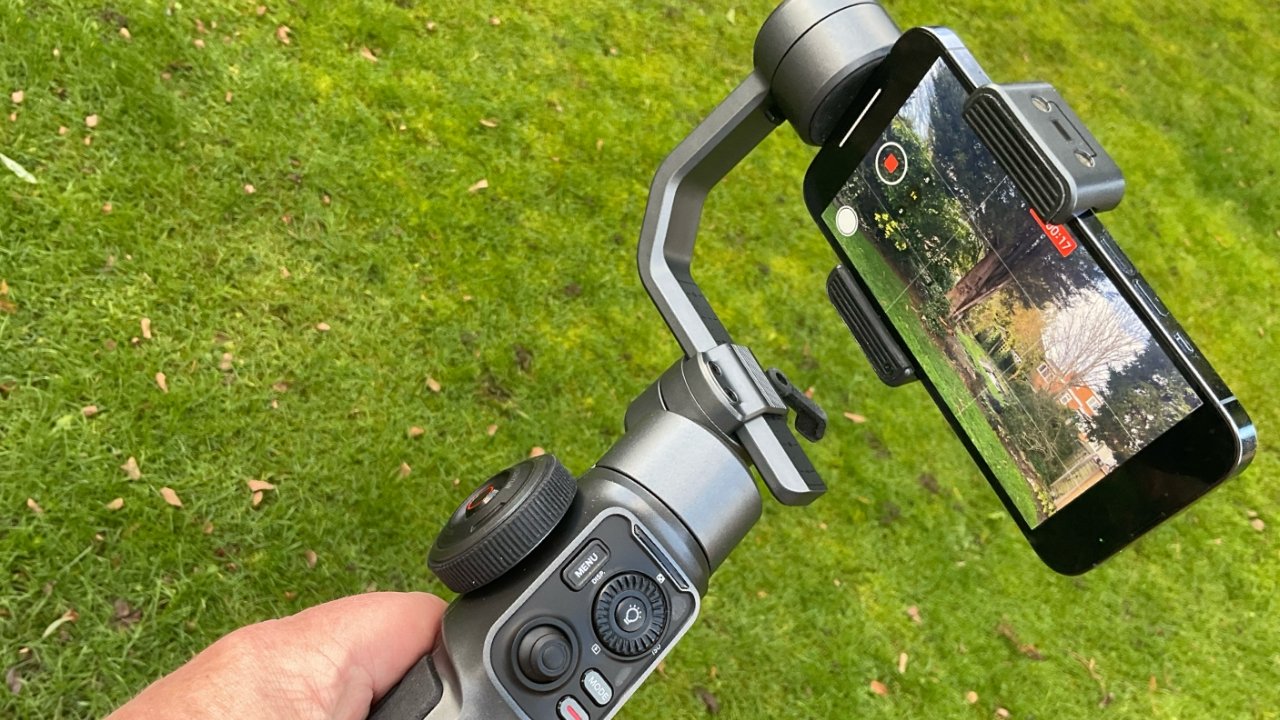
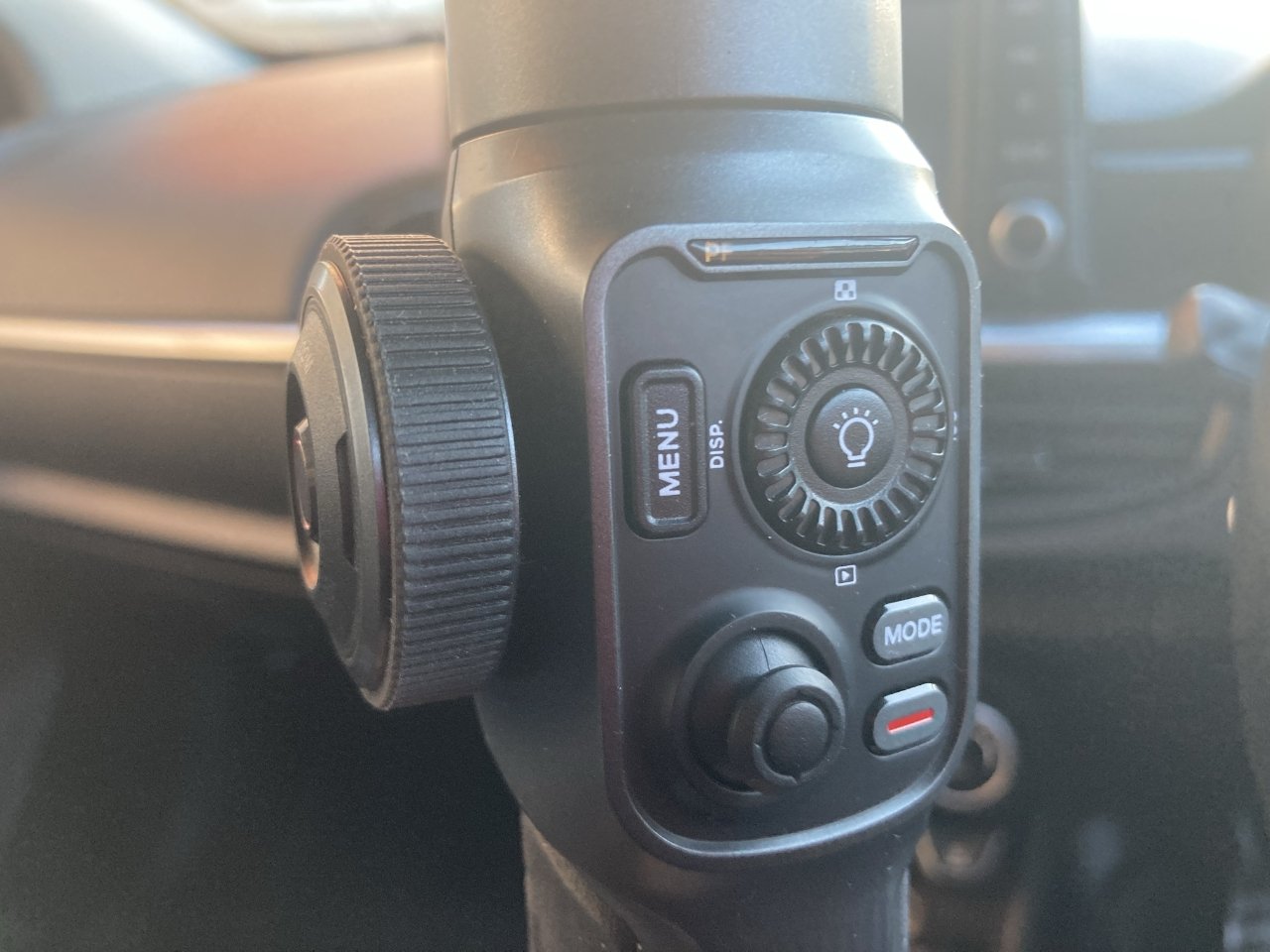
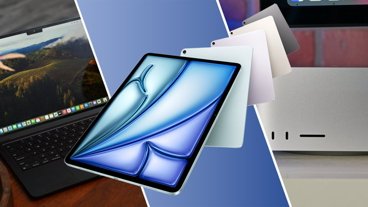

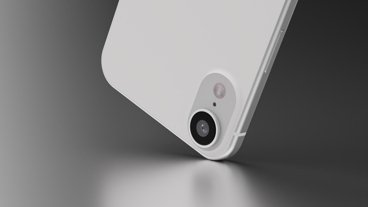

-m.jpg)



 Malcolm Owen
Malcolm Owen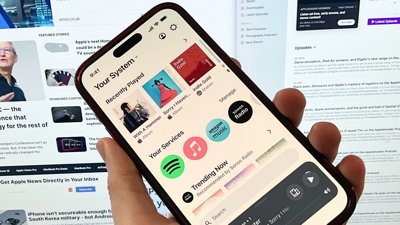

 Amber Neely
Amber Neely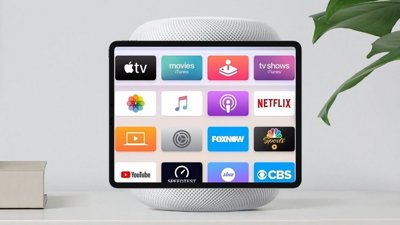
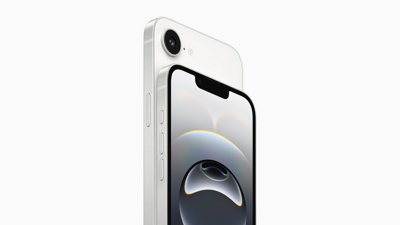
 Andrew Orr
Andrew Orr
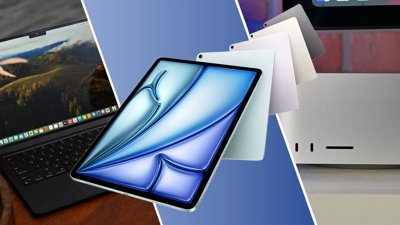
 Christine McKee
Christine McKee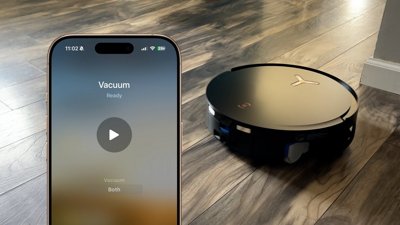
 Andrew O'Hara
Andrew O'Hara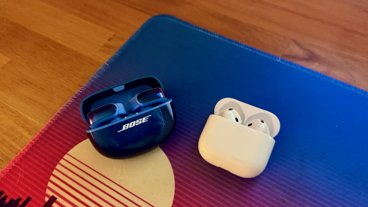




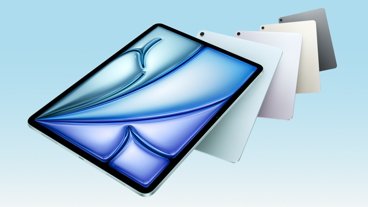

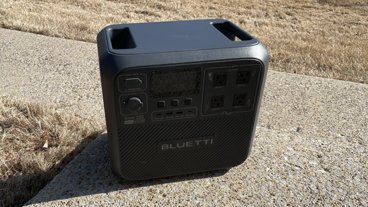

There are no Comments Here, Yet
Be "First!" to Reply on Our Forums ->